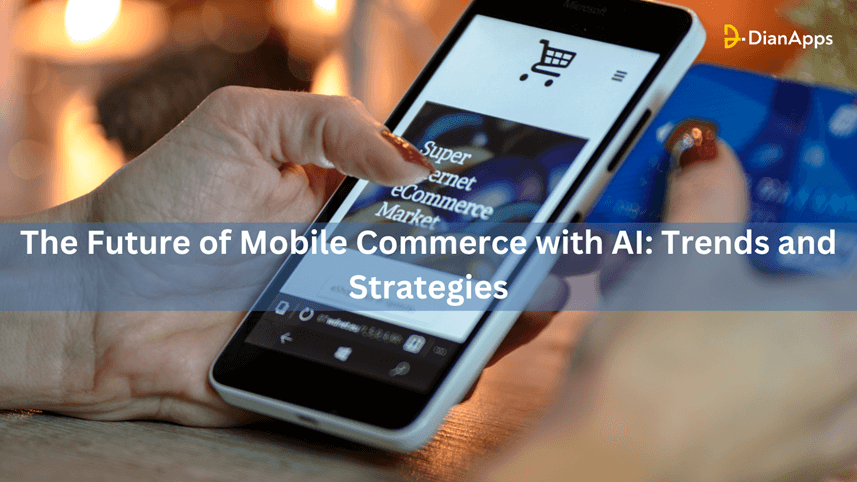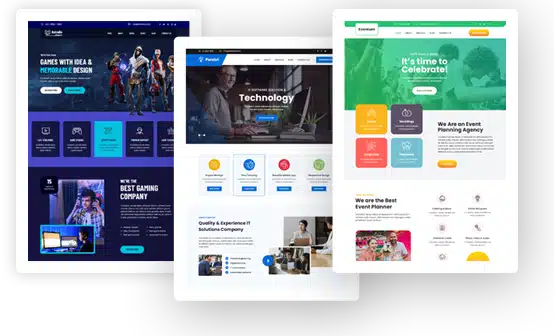The Future of Mobile Commerce with AI: Trends and Strategies

Expert predictions state that in 2024, mobile commerce will account for 63% of retail e-commerce revenue. Catalysts such as AI chatbots that improve customer service and more interactive shoppable content are driving this trend.
If you want to continue making money, you must be flexible and adjust fast to changing trends in mobile commerce. Creating a flawless mobile purchasing experience needs to be the main priority.
This article will show you how to leverage strategies like hyper-personalized push notifications to meet evolving customer needs and maintain your competitive edge. We also go over potential problems and solutions when putting the newest trends into practice.
What is m-commerce, or mobile commerce?
The practice of purchasing and selling things via wirelessly portable electronic devices, such as tablets and smartphones, is known as mobile commerce, or m-commerce. Mobile commerce transactions can involve the purchase of goods or services such as consumer packaged goods, business software, or fashion items.
Online customers may make purchases utilizing mobile commerce (m-commerce) without the need for a computer. Mobile commerce examples include:
- Browser-based shopping
- In-app acquisition
- Apps for virtual marketplaces
- Digital wallets such as Samsung Wallet, Google Pay, and Apple Pay
Retail m-commerce revenues in the US will make up 44.6% of all US retail e-commerce in 2024. That is more than $558 billion. The transition to mobile commerce is speeding up with the availability of new phone technologies, such as 5G.
In addition, society is becoming increasingly reliant on digital gadgets and is fixated on smartphones.
Here is the evidence:
- By 2024, the average daily usage of mobile phones for US consumers will be reduced to three hours and fifteen minutes.
- In a survey with 537 students, 97% of young people reported having mild to severe nomophobia, or the dread of being cut off from mobile phone connectivity.
- Compared to those who aren’t hooked, individuals who are addicted to smartphones have severe withdrawal symptoms.
What distinguishes e-commerce from m-commerce?
Any type of online goods buying and selling is referred to as e-commerce, especially as modern headless-commerce-development continues to reshape digital storefronts. A subcategory of e-commerce known as “mobile commerce,” or “m-commerce,” refers to buying and selling done using mobile devices.
The demands of customers on desktops and smartphones differ in what they need to buy. E-commerce businesses require a mobile-friendly website that displays properly on smaller screens or a specific mobile app that users can download to their smartphones and use to make purchases. The number of people who own smartphones is predicted to increase to 6.9 billion by 2024.
Trends & Strategies of Mobile Commerce You Must Know
Mobile commerce is growing due to advancements in AI and customization, voice commerce, social commerce, and other areas.
To remain competitive, you should take advantage of the following major trends:
-
Contactless payments and mobile wallets
According to a Statista report, 50% of consumer transactions in 2023 were made using digital wallets. According to predictions, the trend will continue to climb, reaching a 61% market share by 2027.
This is a result of rising smartphone adoption rates, an increase in eCommerce development solutions, and a greater desire for security and convenience. You may take advantage of this trend by offering cryptocurrency alternatives and all well-known mobile wallet payment methods to make purchases simple.
Furthermore, according to Statista, mobile wallets are becoming more and more common because
- The requirement is to serve the unbanked people in Asia-Pacific, who make up almost 70% of all transactions using this channel.
- Many experts predict that because of their small transaction fees and simplicity of use, cryptocurrencies might eventually replace cash and cards.
- Stated differently, there’s a growing need for fintech-driven wallets to guarantee user ease and expand the user base that can make transactions.
Similarly, Statista projects a 17% compound annual growth rate in Bitcoin payments between 2022 and 2029. Retail and eCommerce are the industries that provide cryptocurrency payments the most, according to a CoinLedger analysis, with 19% of transactions.
-
Voice Commerce
According to Statista, voice commerce will be worth around US$20 billion in 2023, four times more than it was in 2021. Between 2018 and 2021, voice technology shoppers climbed by 120% in the US alone.
Between 2020 and 2024, the number of voice assistants quadrupled globally to 8.4 billion.
You must now give voice search optimization top priority as a result of this change. If not, your offers could not show up for these kinds of searches, which could result in missed sales chances. Features like click to call can also streamline the purchase process, helping voice and mobile users take instant action when ready to buy.
But what is the process for voice SEO?
Given that voice search utilizes natural language patterns, consider incorporating more long-tail keywords and inquiries into your writing. In order to accommodate customers with impairments and others who prefer hand-free searches, you should also offer audio explanations.
-
Extremely Customized Push Alerts
More clients desire customized alerts. Additionally, their absence could be a deal-breaker for some. For these reasons, an increasing number of companies are utilizing AI to personalize their push notifications.
Because AI is faster than humans at understanding shifting client wants, integrating AI makes the process of creating hyper-personalized push alerts easier. It can assist you in swiftly analyzing large amounts of customer data and delivering customized messages to different segments.
Additionally, hyper-personalized push alerts improve user retention and engagement. Using customized push notifications, for example:
- By customizing, Landmark Group increased revenue by 56%, subscriber count by 35%, and customer retention by 65% in just 28 days.
- In three months, Beyond the Rack increased user spending by 26%, user sessions by 72%, repeat visits by 50%, and CTR by 20%.
-
Integration of Virtual Reality (VR)
Although VR technology is still in its infancy, it has the potential to revolutionize mobile commerce for specific product categories. By enabling users to virtually tour businesses, interact with items in 3D, and experience them in a more realistic setting, virtual reality apps may create immersive shopping environments.
Before making a purchase, customers could be able to virtually test drive a car, go over all of its features, and even personalize its interior via a VR app for a car dealership. But in 2024, the need for specialist VR headsets and the early stages of VR development for mobile platforms would probably limit the usage of VR technology in mobile commerce.
-
Integration of Social Media for Shopping
Popular social media sites like Facebook, Instagram, and TikTok are progressively adding shopping functions that let users find and buy things right there on the site. Without ever leaving the social media app, users may peruse product catalogs, see product details, and finalize transactions.
For consumers who spend a lot of time on social media, this seamless connection makes buying easy and spontaneous. Imagine finding a pair of sunglasses you adore while perusing through your Instagram feed.
You can click on the product image, get more information about the sunglasses, and even buy them right within the Instagram app thanks to social commerce capabilities, all without ever leaving the app.
-
Omnichannel strategy
The omnichannel strategy is based on the expectation of customers that they would have a smooth and uniform online, mobile, and in-store buying experience. Product details, special offers, and loyalty plans are guaranteed to be consistent across all touchpoints with the help of an omnichannel approach.
Further bridging the gap between online and offline channels are services like click-and-collect (buying online and picking up in-store) and buy-online-return-in-store (purchasing online and returning undesirable products to a physical shop).
For a seamless and cohesive shopping experience, a consumer may, for instance, study a product on a brand’s mobile app, visit a real store to try it on, and then finish the purchase through the mobile app using a remembered payment method. Customers may engage with a business through their preferred channel when using an omnichannel strategy, which promotes a more unified shopping experience.
The prospects for mobile commerce beyond 2024
Mobile commerce is still transforming the way that customers purchase. The extent to which consumers have come to rely on their mobile devices for making purchases is demonstrated by these m-commerce trends and statistics.
Leveraging the potential of mobile shopping, e-commerce and physical merchants may shorten and improve the consumer journey.
Make your website lightning-fast, incredibly responsive, and mobile-friendly first. Provide a one-click checkout process and facilitate customers’ ability to contact customer service from their devices. Offer a variety of mobile payment options, such as Shop, mobile wallets, and in-app checkout. You’ll immediately see a rise in mobile traffic to your website.
Conclusion
Innovation in company strategy, changing customer behavior, and technical improvements are all contributing to the dynamic change of the mobile commerce market.
The m-commerce landscape of 2024 and beyond will be shaped by the trends covered in this article, which include AI-powered personalization, voice search and shopping, AR/VR integration, social commerce boom, omnichannel approach, focus on sustainability, the rise of super apps, mobile wallets, frictionless payments, and the ascendancy of AR/VR.
Businesses can create a smooth and engaging mobile purchasing experience for customers by embracing these trends and adjusting their mobile strategy appropriately. In the ever-changing digital world, this will ultimately drive sales and generate brand loyalty.
We can create an m-commerce application specifically for your company if you would want to take advantage of its benefits.
Get in touch with a Mobile app development company to learn more about mobile commerce services for your business!

